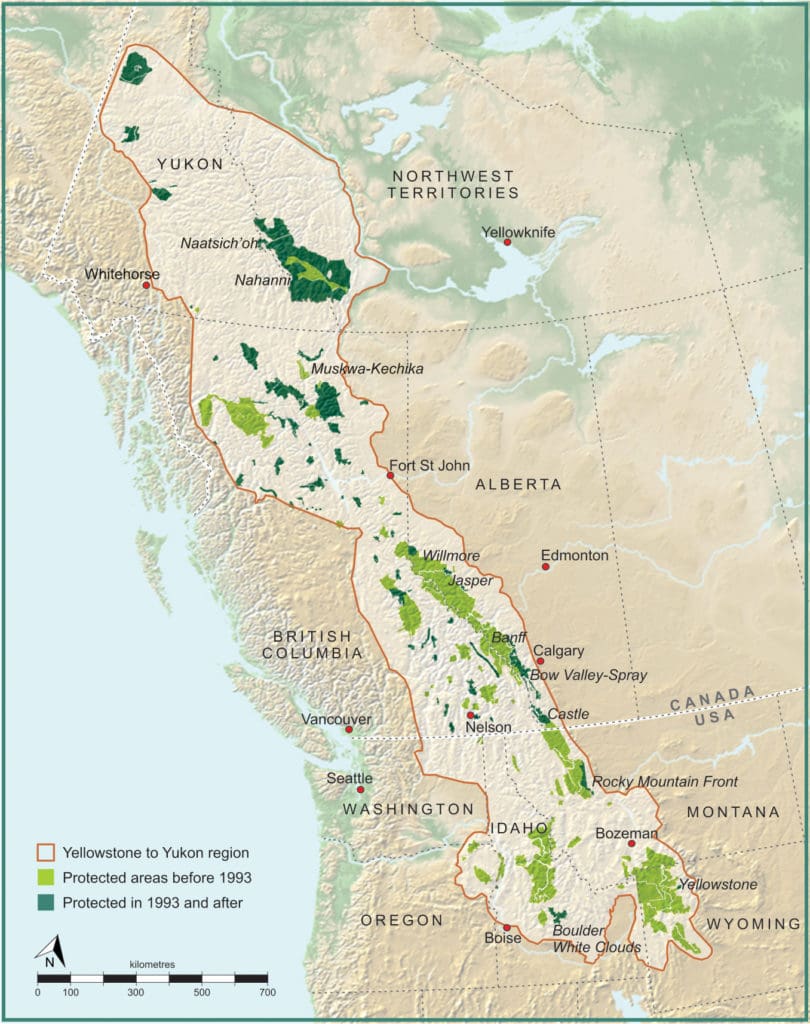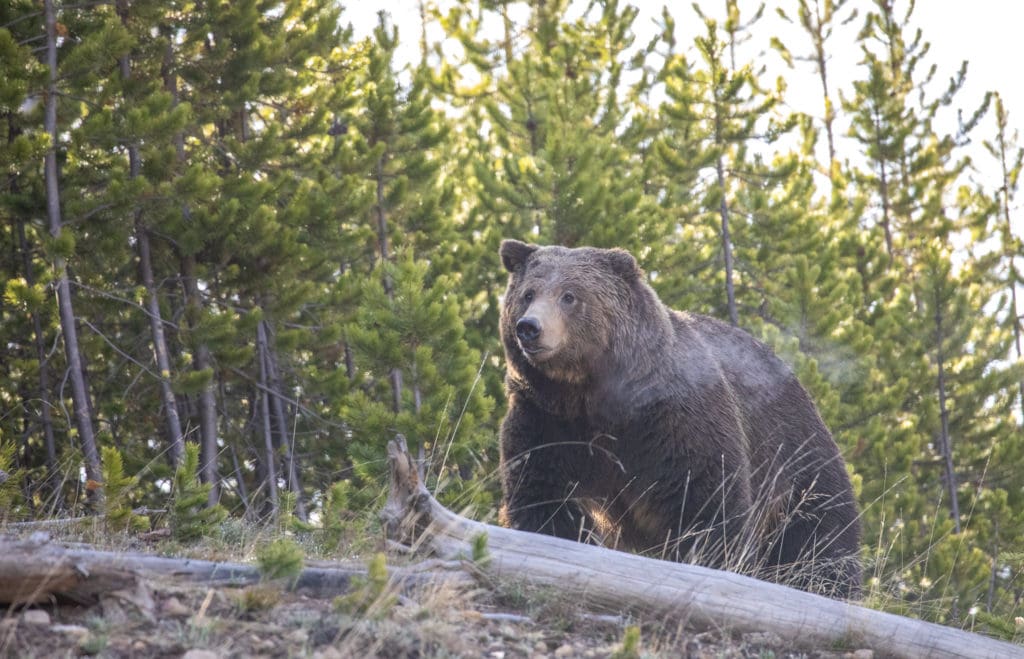Research shows major conservation gains in the Yellowstone to Yukon region since 1993
More than 80 percent growth in overall protection reported
A new paper lays out evidence that a big audacious vision of connecting and protecting the mountains from Yellowstone in Wyoming to the Arctic Circle in the Yukon has led to measurable on-the-ground conservation across an almost 3,400-kilometer-long region.
The study, just published in Conservation Science and Practice, uses five conservation metrics to evaluate progress. Data shows an 80.5 percent increase in overall protection from 1993 to 2018 in the Yellowstone to Yukon region. This success is even more striking when compared against areas elsewhere in the continent, places protected areas remained constant, or even declined.
“In the early days folks said our goal was audacious. This paper shows it is achievable,” says Jodi Hilty, Yellowstone to Yukon (Y2Y) Conservation Initiative chief scientist and president, and paper co-author.
“This progress is directly connected to people with a passion for nature and an amazing group of partners who support the Y2Y mission. That includes pinpointing core habitats, keeping those places connected, and providing tools and approaches for wildlife and people to coexist.”

“In times when we face dire headlines about climate change impacts or biodiversity crashes, this is a ray of hope. Large-landscape conservation visions like Y2Y put into action represent powerful approaches to achieve biodiversity conservation at the scale that nature needs,” says Mark Hebblewhite, paper co-author and professor of ungulate habitat ecology at the University of Montana.
“As the United States and Canada advance concepts such as America the Beautiful and 30×30, the Y2Y vision and progress offers a road map for how we can stem the loss of biodiversity in these countries. It shows a highly collaborative approach that maps out and implements conservation at a large landscape scale can make a difference. At the very coarsest scale such a vision also helps store carbon and conserve species during this time of climate change,” says Hilty.
Read the paper now: Can a large-landscape conservation vision contribute to achieving biodiversity targets?
This conservation progress has direct impacts on:
- Wildlife connectivity. There are now at least 117 road-wildlife crossings in the region dedicated to keeping people and wildlife safe, with more on the way;
- Maintaining intactness. From 1968-1993 there were 268 new protected areas, with an additional 149 from 1993-2018, totaling 417. The increase in protected areas helps to conserve the wildlife and wild places now and into the future;
- Grizzly bear recovery. Sustained growth in protected areas and private land conservation has been complemented by the expansion of grizzly bear ranges in the U.S. portion of the region;
- Private lands conservation. The single largest instance of private land conservation in the U.S. is inspired, in part, by the Y2Y vision. Additional other voluntary private land conservation measures help advance keeping core habitats connected.
Media coverage
- Did it work? Yellowstone to Yukon researchers find novel ways to measure success | Missoulian, Dec. 9, 2021
- Y2Y vision contributes to 80 per cent increase in protected areas | Rocky Mountain Outlook, Dec. 16, 2021
- Yellowstone to Yukon: How conservation has grown over 25 years | BrandeisNow, Jan. 14, 2022


